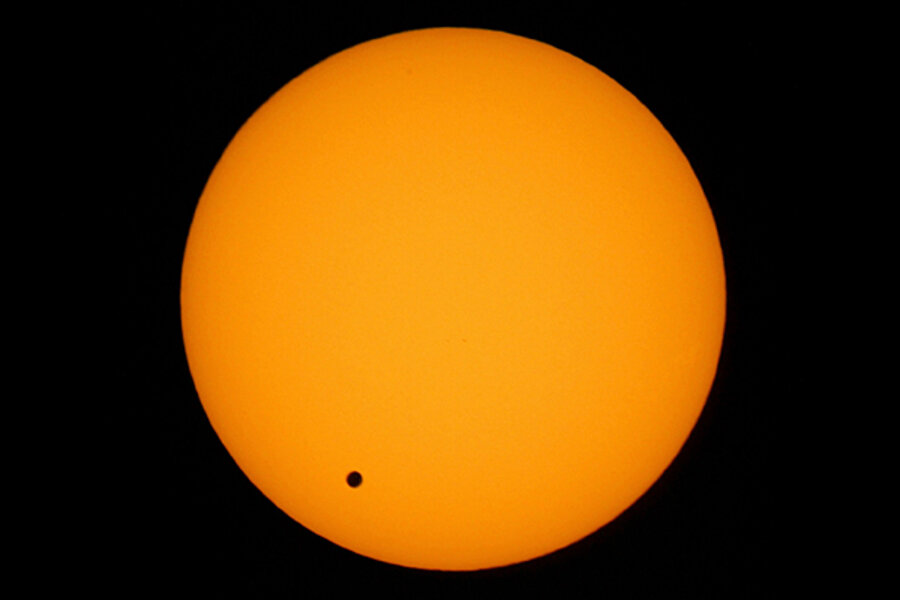Mexico to witness transit of Venus, as Mayas did before
Loading...
| Mexico City
The ancient Maya, famed for their knowledge of astronomy and highly precise calendar, closely followed the movements of Venus – possibly including the planet’s rare transits across the sun.
Now modern Mexico gets to view this last-in-a-lifetime planetary show tonight, along with the rest of the western hemisphere, when Venus will travel across the sun, appearing like a freckle on the face of our distant star.
“Venus will pass between the earth and the sun, creating a small shadow,” says Alejandro Farah, an astronomer with Mexico’s National Autonomous University.
There won’t be another chance to see this phenomenon for another 105 years. Mercury circles the sun fast enough that its shadow can be seen across the sun every 13 to 14 years. However, the tilted orbit of Venus makes its transit exceedingly rare. The transits occur in pairs spread eight years apart, separated from the next pair by more than a century. The last set was visible in 1874 and 1882. Tonight's phenomenon is the second of a pair (the first was in 2004) and won't be seen again until 2117.
For viewers in Mexico City, the second planet from the sun will make its move at approximately 5 p.m.
While June weather in the capital is typically hot and clear during the day, rain showers and thunderstorms often obscure the late afternoon sky. Weather.com predicts “scattered showers” for the capital beginning around 3 p.m. But, as often happens in the sprawling metropolis, rain may fall in one borough while the sun shines on another.
Venus’ five-hour journey will be visible for about three hours in Mexico City, until the sun sets at 8:13 p.m. local time. (The three top spots in the country to witness the journey are in Torreon, Coahuila, and Los Cabos and San Pedro Martir, Baja California, where Venus will be visible on the face of the sun for about six hours.)
The Maya followed Venus closely. Archeological studies of wall paintings in the ancient city of Mayapan suggest that the twin transits of Venus in 1153 and 1275 were likely seen and registered by the Maya, according to UNAM astronomer Jesus Galindo Trejo.
The Mayan studies of this planet were based on the “full capacity that the Maya had to carefully follow the apparent movement of this planet,” Mr. Galindo Trejo wrote in an academic article. “They meticulously registered the seasons of appearance and disappearance of Venus in its movement around the sun, seen from the Earth.”
Viewing activities are planned around the capital. UNAM’s science museum, Universum, plans to set up about a dozen telescopes on an esplanade for people to safely witness the phenomenon and will host talks, astronomy workshops, and children’s activities. Chapultepec Castle in the heart of the city’s largest park will also set up viewing stations.
The city’s Institute of Science and Technology is advising viewers to take special precautions, including never looking at the sun directly and using special filtered glasses to view the phenomenon for just seconds at a time.







